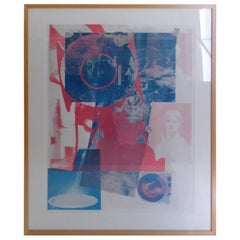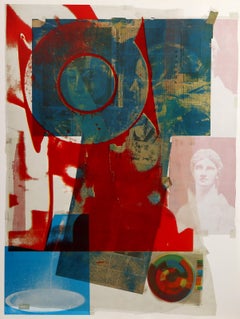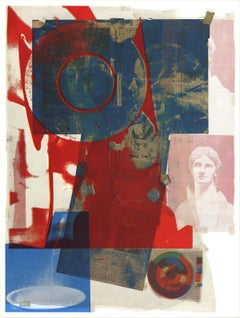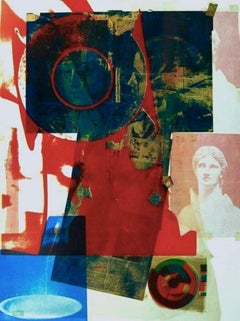Quarry Robert Rauschenberg
Vintage 1960s American Contemporary Art
Paper
1960s Pop Art Figurative Prints
Offset
Recent Sales
20th Century Prints and Multiples
Offset
1960s Abstract Expressionist Abstract Prints
Lithograph, Offset
Late 20th Century Contemporary Abstract Prints
Lithograph
1960s Pop Art Abstract Prints
Lithograph
1960s Abstract Expressionist Abstract Prints
Lithograph, Offset
Vintage 1960s American Mid-Century Modern Contemporary Art
Paper
1960s Pop Art Figurative Prints
Offset
1960s Pop Art Figurative Prints
Offset
1960s Pop Art Figurative Prints
Offset
1960s Pop Art Figurative Prints
Offset
1960s Pop Art Figurative Prints
Offset
1960s Pop Art Figurative Prints
Offset
1960s Pop Art Abstract Prints
Lithograph
1960s Pop Art Abstract Prints
Lithograph
1960s Pop Art Abstract Prints
Lithograph
20th Century Contemporary Figurative Prints
Lithograph
1960s Pop Art Abstract Prints
Lithograph
1960s Abstract Expressionist Abstract Prints
Lithograph, Offset
1960s Abstract Expressionist Abstract Prints
Lithograph, Offset
1960s Abstract Expressionist Abstract Prints
Lithograph, Offset
1960s Abstract Expressionist Abstract Prints
Lithograph, Offset
People Also Browsed
1970s Contemporary Still-life Prints
Lithograph, Screen
21st Century and Contemporary Swedish Mid-Century Modern Table Lamps
Textile
20th Century Pop Art Prints and Multiples
Offset
1990s Pop Art Abstract Prints
Lithograph
1970s Pop Art Abstract Prints
Screen
1980s Post-Modern Figurative Prints
Lithograph
1980s Pop Art Prints and Multiples
Paper, Lithograph
1990s Pop Art Abstract Prints
Archival Ink, Archival Paper, Lithograph, Offset
1970s Pop Art Abstract Prints
Lithograph, Offset
1970s Conceptual Abstract Prints
Offset
21st Century and Contemporary Contemporary Prints and Multiples
Screen
Early 2000s Abstract More Art
Screen
21st Century and Contemporary Contemporary More Art
Paper
Vintage 1930s Mexican Folk Art Religious Items
Metal
1960s Prints and Multiples
Lithograph
1980s Pop Art Prints and Multiples
Lithograph
Quarry Robert Rauschenberg For Sale on 1stDibs
How Much is a Quarry Robert Rauschenberg?
Robert Rauschenberg for sale on 1stDibs
Robert Rauschenberg was one of the preeminent American artists of the 20th century, occupying a singular position that straddled the Abstract Expressionist and Pop art movements, drawing on key elements of each. An artistic polymath equally adept at painting, collage and silkscreening, Rauschenberg is best known for for the complex assemblages of found objects he termed “combines.”
Rauschenberg was born in Port Arthur, Texas, in 1925. He first began to seriously consider a career in art in 1947, while serving in the U.S. Marines. After leaving the service, he briefly studied art in Paris with support from the G.I. Bill, then moved to North Carolina to attend Black Mountain College, home to a flourishing cross-disciplinary art community. Among his peers there were choreographer Merce Cunningham and composer John Cage, both of whom became friends and artistic collaborators.
Relocating to New York in the mid-1950s, Rauschenberg was initially put off by what he perceived as the self-seriousness of the adherents of Abstract Expressionism, then the dominant movement in the New York art world. Like Andy Warhol and Roy Lichtenstein, Rauschenberg was drawn to the visual landscape of popular culture and mined its imagery for inspiration. He used unorthodox materials like house paint and tried novel techniques in his studio like running paper over with a car whose wheels he had inked. Shortly after his inaugural solo exhibition at Leo Castelli Gallery, which featured paintings and drawings, he pivoted to a new format, creating his first found-object combines, which became his signature. The most famous of these is the 1959 Monogram in which a taxidermied goat is surrounded by a car tire, recalling the way a person’s initials are interwoven in the design referred to by the title.
Later in the 1960s, Rauschenberg turned his attention to silkscreening, creating prints that feature iconic figures of the day, very much in line with the style and content of Pop art. One such work, 1965's Core, which was created to commemorate the Congress of Racial Equality, combines photographs of President Kennedy, an unidentified Native American man, and a statue of a Civil War soldier with images of highways, amusement parks, street signs, and other features of the built environment. A circular color-test wheel sits at the composition’s formal core, reflecting the work’s commentary on race and ethnicity.
Throughout the 1960s and ‘70s, Rauschenberg experimented with printing on unusual materials, such as Plexiglas, clothing and aluminum. Venturing even further afield, he created performance works, such as his 1963 choreographed piece “Pelican” and the 1966 film Open Score. In 1998, the Guggenheim Museum presented a large and comprehensive retrospective of Rauschenberg’s work, highlighting his influence on American art in the second half of the 20th century.
Find original Robert Rauschenberg art for sale on 1stDibs.
Finding the Right Prints-works-on-paper for You
Decorating with fine art prints — whether they’re figurative prints, abstract prints or another variety — has always been a practical way of bringing a space to life as well as bringing works by an artist you love into your home.
Pursued in the 1960s and ’70s, largely by Pop artists drawn to its associations with mass production, advertising, packaging and seriality, as well as those challenging the primacy of the Abstract Expressionist brushstroke, printmaking was embraced in the 1980s by painters and conceptual artists ranging from David Salle and Elizabeth Murray to Adrian Piper and Sherrie Levine.
Printmaking is the transfer of an image from one surface to another. An artist takes a material like stone, metal, wood or wax, carves, incises, draws or otherwise marks it with an image, inks or paints it and then transfers the image to a piece of paper or other material.
Fine art prints are frequently confused with their more commercial counterparts. After all, our closest connection to the printed image is through mass-produced newspapers, magazines and books, and many people don’t realize that even though prints are editions, they start with an original image created by an artist with the intent of reproducing it in a small batch. Fine art prints are created in strictly limited editions — 20 or 30 or maybe 50 — and are always based on an image created specifically to be made into an edition.
Many people think of revered Dutch artist Rembrandt as a painter but may not know that he was a printmaker as well. His prints have been preserved in time along with the work of other celebrated printmakers such as Pablo Picasso, Salvador Dalí and Andy Warhol. These fine art prints are still highly sought after by collectors.
“It’s another tool in the artist’s toolbox, just like painting or sculpture or anything else that an artist uses in the service of mark making or expressing him- or herself,” says International Fine Print Dealers Association (IFPDA) vice president Betsy Senior, of New York’s Betsy Senior Fine Art, Inc.
Because artist’s editions tend to be more affordable and available than his or her unique works, they’re more accessible and can be a great opportunity to bring a variety of colors, textures and shapes into a space.
For tight corners, select small fine art prints as opposed to the oversized bold piece you’ll hang as a focal point in the dining area. But be careful not to choose something that is too big for your space. And feel free to lean into it if need be — not every work needs picture-hanging hooks. Leaning a larger fine art print against the wall behind a bookcase can add a stylish installation-type dynamic to your living room. (Read more about how to arrange wall art here.)
Find fine art prints for sale on 1stDibs today.



